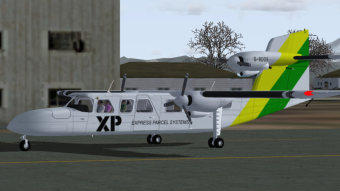

Preparing To Fly Selecting your aircraft Keep in mind that you don’t necessarily need to fly a propeller aircraft to perform aerobatic maneuvers. Perhaps it’s the excitement of attempting the same maneuvers flown by airshow performers before cheering crowds or it’s completing an impressive aerobatic routine.īut I think it’s mostly because performing aerobatics in FS2004 is just plain fun. Therefore, I get my aerobatics thrills in FS2004. These G forces are real and definitely affect the performance and ability of every pilot. Unfortunately, there’s little chance I could tolerate the G forces the maneuvers would place on me. I know that I was impressed and amazed last July at the Air Venture show in Oshkosh watching pilots such as Sean D Tucker, Patty Wagstaff and others fly beautiful, precise aerial routines. If you’ve ever attended an airshow, you must have marveled at the aerobatic artisans as they perform their aerobatic maneuvers. We’ll even use the same airplane that Patty flies in her shows - the Extra 300. In this article we’ll look at a few examples of aerobatics you can perform in FS2004. If you think you can handle it, try it yourself?. You also must always be aware of where you are in the “aerobatic box,” the sequence you are flying, the traffic that may wander into your flight area and definitely where the ground is at all times. You need to make split second decisions to execute the maneuvers successfully while facing disorienting visuals, eardrum rattling engine roar, a changing environment and G-forces that can cause you to black out. However, you’ll be tested on your skill, coordination, finesse and knowledge on how your airplane handles. You won’t need great physical strength to perform aerobatics. However, the version of the maneuver with which most of us are familiar today from aerobatics is not the maneuver that Max Immelmann found so successful.ĭo you think that Patty Wagstaff has an easy career simply flying around the country and performing aerobatics at different airports?ĭon’t be fooled…you may be surprised by the precision and difficulty involved in these aerobatic maneuvers. Many historians credit a World War I German ace named Max Immelmann with creating this maneuver. The Immelmann The Immelmann turn is a simple yet very effective maneuver under the proper technical circumstances. The rudder is then used in either case to start autorotation as in a spin. You must intentionally stall your aircraft by applying positive G-forces and in an outside snap, you need to stall your aircraft by applying negative G-forces. To fly this type of roll successfully means that you must constantly change rudder and elevator control inputs throughout the roll.Ī snap roll also must be flown normally on a straight line.Ī snap roll is an autorotation with one wing stalled.

Maintain a constant rate for the roll and the longitudinal axis of the airplane must be straight. Most slow rolls must be flown normally on a straight line. Other types of rolls you can try include slow rolls and snap rolls (called flick rolls in Europe). Try these to test your skill: Slow rolls and snap rolls After the roll is completed the nose is usually 20 – 30 degrees below the horizon. Center the stick as the wings become level with the horizon. Maintain controls in that position until you complete the roll. Therefore, hold backpressure on the stick and move it quickly, but smoothly, all the way to one side. Most aerobatic professionals believe it’s easier to start with rolls to the left. Otherwise, by increasing backpressure after you’ve established the correct pitch attitude may force you from the reference point (the smokestacks in this example) or may drop the nose too much when you’ve started inverted flight. Look to the left and make certain you’ve set the correct pitch attitude. Remember, pulling the nose up too much or too little at the start of the maneuver results in a bad roll. This neutralizes the elevator and deflects the aileron fully in the direction of the roll.

Bring the stick back slowly so you’re raising the nose smoothly to 20 – 30 degrees above the horizon. Maintain a level flight and airspeed of about 140 knots. In this example, I’m using an antenna/smokestack. The following is the diagram of the roll: Start by selecting a reference point on the horizon, such as a smokestack, road, building or even a cloud. As with many aerobatics in the Extra 300S, performing an aileron roll occurs very quickly (its roll rate exceeds 400 degrees per second). Thanks to the brisk roll rate of the Extra 300S, the aileron roll one is an easy aerobatic maneuver to accomplish. However, to do this successfully you must keep the nose following a tight circle around a point on the horizon. You’ll rotate your airplane 360 degrees around its longitudinal axis. An aileron roll involves a four-step maneuver.


 0 kommentar(er)
0 kommentar(er)
